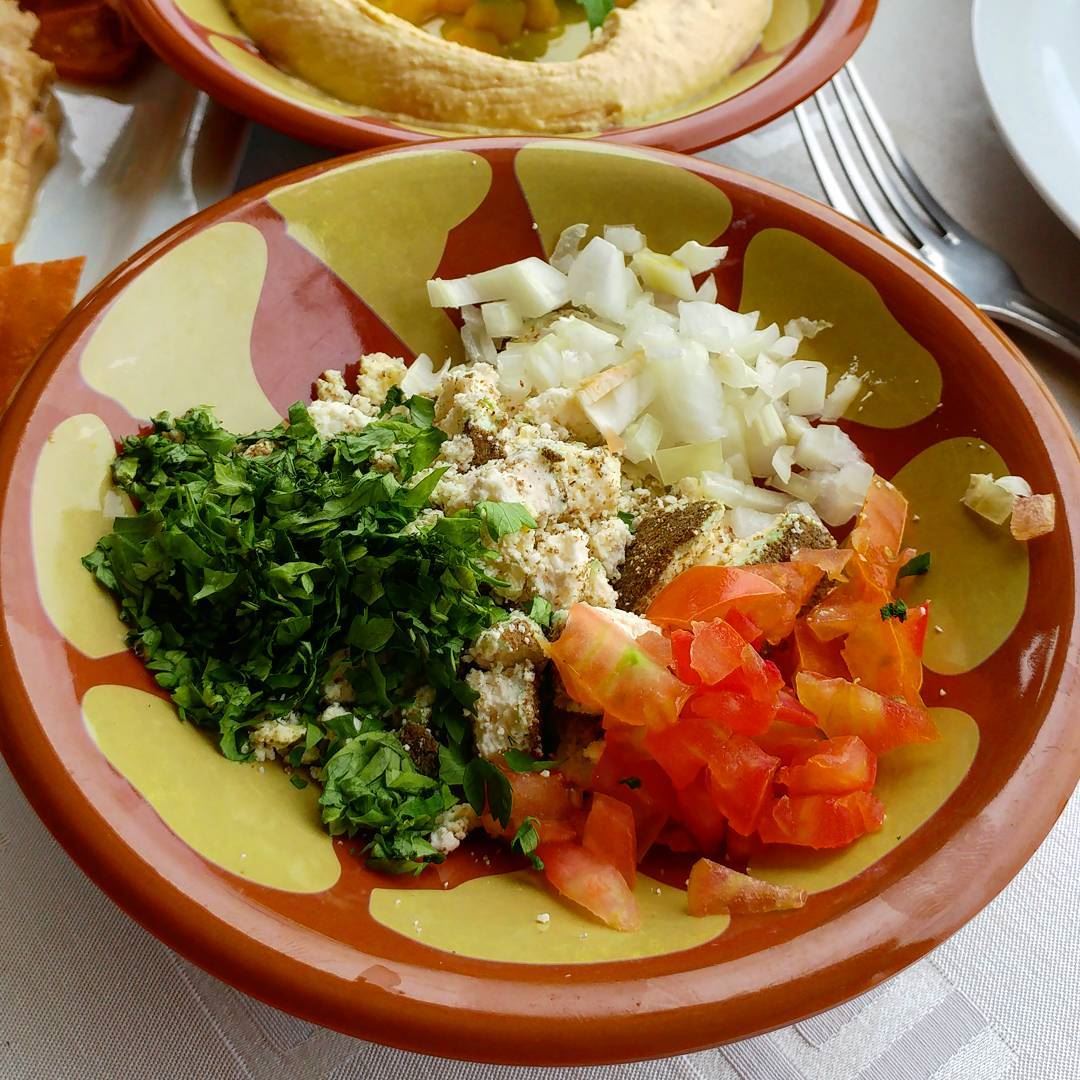Shanklish is the only “blue” cheese of Syria and Lebanon. It is blue because the cheese is left to age and develop a mould layer on the surface.
Proper Shanklish making is a complicated lengthy process. It starts by turning milk into yoghurt. The yoghurt is placed in a large container and shaken continuously for a good period of time to separate the butter that is then skimmed away. This creates a thin skimmed yoghurt called “Shenineh”. The next step is to slowly heat the shenineh until it curdles. These curds are then drained in a cheese cloth for few hours to create “Arisheh”, a delicately flavoured crumbly white cheese. Arisheh is then salted generously and rolled into tennis-ball sized cheese balls.
These are then dried in the sun for a week. When dried shanklish balls are placed in airtight jars and left in the dark to mature, they will develop a mouldy layer on the surface. Once the desired aging time is reached the cheese balls are rinsed and dried to remove the mould. Shanklish balls are finished by rolling them in a thyme layer.
A common variation of the original is made by adding paprika and Aleppo peppers to Arisheh before it gets rolled. This will give shanklish an orange pink colour. Flavoured shanklish is commonly rolled in Aleppo peppers rather than thyme.
Shanklish is not a native cheese to Damascus. It is very popular in coastal and mountainous areas especially around Tartous, Latakia and Homs.
Shanklish could be eaten with Arabic bread and some olive oil with tomato, cucumber and mint leaves on the side but the most common and best way to eat shanklish is to make it a salad.
This dish works as a mezze and it is served in most restaurants around the city.
Ingredients:
1- One Shanklish ball
2- Small red onion (or few spring onions)
3- One tomato
4- Olive oil
Finely chop the tomato and the onion. Crumble the shanklish and mix. Drizzle with a generous amount of olive oil.
Serve with Arabic flat bread
Lara Khouli

